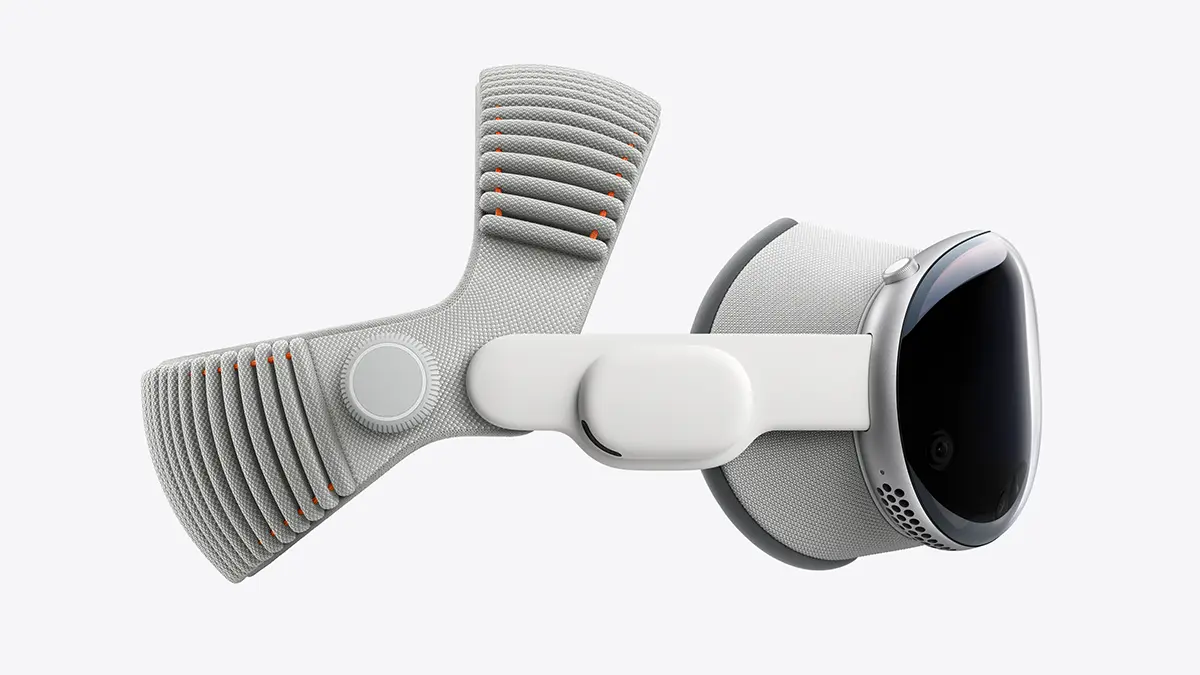
The landscape of immersive technology has taken a significant leap forward. On October 15, 2025, Apple announced its M5 chip, a powerhouse designed to dramatically accelerate artificial intelligence and graphics performance. This new system on a chip (SoC) is now at the heart of the upgraded Apple Vision Pro, signaling a new chapter for professional and creative applications in spatial computing.
The M5 Chip: A New Engine for Spatial Computing
Built on third-generation 3-nanometer technology, the M5 chip features a next-generation 10-core GPU with a dedicated Neural Accelerator in each core. This architecture is engineered to provide a substantial boost to AI-driven workflows and deliver a significant uplift in graphics performance, including more advanced hardware-accelerated ray tracing. For users of the Apple Vision Pro, this translates to a sharper, more fluid visual experience, with the device now able to render 10% more pixels and support refresh rates up to 120Hz. The higher performance also enhances on-device AI features and allows for more complex and realistic immersive environments to be rendered in real-time.
Solving the Ergonomics of Immersion
A persistent challenge in virtual reality has been user comfort. Many VR headsets have been criticized for their front-heavy designs, which can cause neck strain and pressure on the face over extended use. This physical discomfort, combined with the potential for motion sickness or dizziness—a result of the vestibular mismatch between perceived and actual movement—has been a barrier to widespread adoption for prolonged use.
Apple's design approach with the Vision Pro appears to address these issues directly. The introduction of the new Dual Knit Band, which includes a counterweight system, aims to create a more balanced and stable fit. Furthermore, the decision to house the battery in a separate, tethered pack removes significant weight from the user's head. This external battery design not only improves comfort but also facilitates longer sessions, as the pack can be connected to a power source. These ergonomic considerations may prove crucial in making spatial computing a more viable tool for all-day professional use.
The Broader VR Landscape: Competition and Strategy
While Apple's entry into the market is significant, the VR landscape is shaped by several key players, most notably Meta. Meta has focused on making VR more accessible through its Quest line of headsets, which offer a compelling balance of performance and affordability. The Quest 3S, for example, is positioned as the company's most affordable mixed-reality device. Recent software updates to Meta's Horizon OS have focused on enhancing the user's virtual home environment and improving multitasking capabilities, allowing users to "anchor" multiple windows in their virtual space. This focus on social interaction and productivity within a virtual environment highlights a different strategic approach compared to Apple's premium, high-performance positioning. Meta's continued development and its large user base ensure a competitive and innovative market for the foreseeable future.
Professional and Enterprise Applications
A key area where the new Vision Pro's power will be felt is in professional applications. Platforms like Matterport, which create detailed 3D digital twins of physical spaces, benefit immensely from higher processing power and display fidelity. Exploring these virtual tours on a device like the Vision Pro offers a highly immersive and realistic experience, which is valuable for industries like real estate, construction, and facility management. Users can access these tours directly through the web browser on the device.
Beyond virtual tours, enterprises are adopting spatial computing for specialized workflows. For instance, CAE uses the Vision Pro for pilot training simulations, while Porsche allows customers to visualize and customize vehicles in showrooms. These applications demonstrate the tangible business value of blending digital content with the physical world, a trend the M5 chip is set to accelerate.
The following sections are preserved from an earlier version of this article, reflecting our journey with this technology.
From the Archives: A Strategic Choice
Our path to offering Matterport 3D tours as a core service began with a simple hardware reality. Years ago, before standalone 360-degree cameras were common, our entry into panoramic media was through early Insta360 cameras. These were not independent devices; they were designed as accessories that plugged directly into an iPhone's Lightning port. The app, the processing, and the control were all iOS-first. This technical dependency placed us firmly within the Apple ecosystem. As we transitioned from those early accessories to more advanced standalone 360 cameras and eventually to the professional Matterport Pro2, the workflow remained. The stability of the iOS apps for camera control, the ease of transferring large scan files with AirDrop, and the powerful processing capabilities of the iPad for on-site presentations made it the most reliable and efficient choice for a professional service.
A 2020 Time Capsule: "An Apple a Day"
With the release of the iPhone SE (2020) and iPad Pro, this was our high-level look at some of the Apple devices that were shaping our work at the time.
Key Features of the Era
The most important factor was the processor—the A13 chip at the time was the engine that made demanding AR and VR applications practical. For 360-degree photographers, this power was essential. A note for fellow photographers from that time was that to use a Matterport Pro2, a newer model of an iPhone or iPad with significant memory was a requirement.
The iPad Pro as a Business Tool
The iPad Pro was becoming a viable laptop replacement. For our work, its value was clear. The large, high-quality screen made presenting Matterport "dollhouse" views and floor plans to clients a far more impactful experience than on a small phone screen. With the addition of LiDAR, the possibilities for AR and accurate depth mapping were just beginning to be explored.
Working with macOS: An Efficient Ecosystem
Since Apple manufactures the hardware and designs the software, the integration leads to efficient power use and a seamless workflow. Features like iCloud for automatic content offloading and AirDrop for transferring large files between a mobile device and a computer at high speeds were—and still are—incredibly valuable in a professional media workflow.